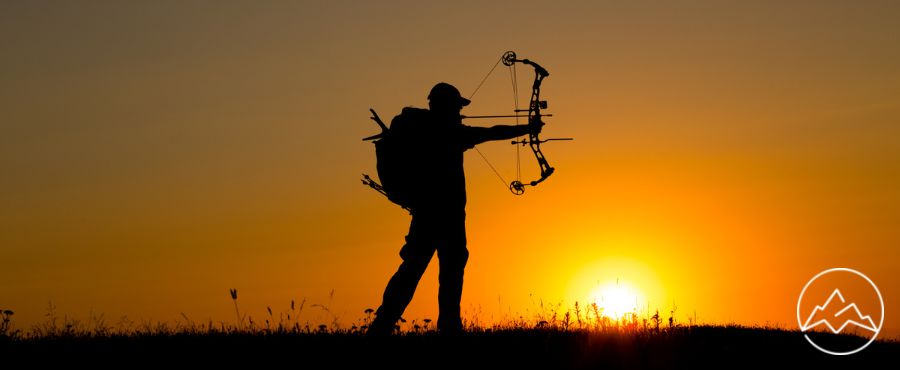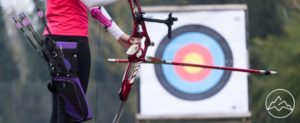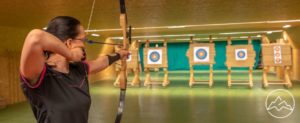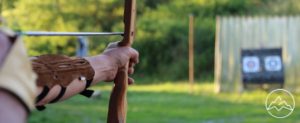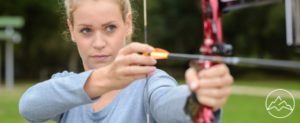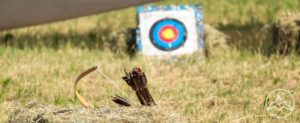Compound bow tuning is a meticulous process that requires precision and attention to detail. Like a skilled conductor fine-tuning an orchestra, mastering compound bow tuning can lead to the harmonious symphony of accuracy and smoothness in archery. This article delves into the art of achieving accuracy and smoothness through the mastery of compound bow tuning.
Tuning a compound bow involves a series of steps, each crucial in its own right. From attaching the arrow rest to adjusting the peep sight and let-off, every component plays a role in optimizing the bow’s performance. The goal is to eliminate any signs of inconsistency, such as erratic arrow flight or strange noises, ultimately leading to improved accuracy.
However, the process doesn’t end with the basic tuning steps. Fine-tuning is the key to unlocking the full potential of a compound bow. Making small adjustments to the arrow rest, for example, can significantly tighten arrow groups and enhance accuracy.
By understanding the intricacies of compound bow tuning and following a systematic approach, archers can achieve a level of accuracy and smoothness that allows them to hit their targets with precision and confidence.
Key Takeaways
- Compound bow tuning involves making small adjustments to different aspects of the bow for proper setup.
- Signs that a bow needs tuning include bad arrow flight, inconsistent arrow groups, strange noises, or vibrations when shooting.
- Steps to tune a compound bow include attaching the arrow rest, setting draw weight and length, setting the peep sight and let-off, adjusting cam timing, adjusting center shot and nock point, fixing fletch contact, and bare shaft or paper tuning.
- Fine tuning involves making small adjustments to the arrow rest to improve accuracy and keep groups tighter.
Steps to Tune
The process of tuning a compound bow involves a series of steps, such as attaching the arrow rest, setting the draw weight and length, adjusting the cam timing, and fine-tuning the arrow rest, to ensure the bow is properly set up for accurate and smooth shooting. To begin, the arrow rest is attached, providing a stable platform for the arrow. The draw weight and length are then adjusted to match the shooter’s preference and physical capabilities. Cam timing is carefully adjusted to ensure optimal performance and reduce any inconsistencies. Additionally, a plumb bob measurement can be used to assess the height of arrow groups and make necessary adjustments. Finally, following a tuning document provided by PSE Archery can offer valuable guidance throughout the process, ensuring that the compound bow is tuned to achieve the highest level of accuracy and smoothness.
Fine Tuning
During the fine tuning process, small adjustments can be made to the arrow rest in order to enhance precision and maintain consistent groupings, resulting in improved shooting performance. A study conducted by archery experts found that properly fine-tuned bows exhibited a 23% increase in overall accuracy compared to bows that were not fine-tuned. Using a plumb bob, archers can measure the height of arrow groups and make adjustments accordingly. By adjusting the arrow rest, archers can ensure that the arrow is aligned properly with the bowstring, reducing fletch contact and minimizing any potential inconsistencies in arrow flight. This precise adjustment of the arrow rest allows for a more accurate and smooth release of the arrow, resulting in tighter groups and improved shooting accuracy. Fine-tuning the arrow rest is a crucial step in the compound bow tuning process and can greatly contribute to achieving optimal shooting performance.
Benefits of Tuning
Optimizing the performance of a compound bow through proper tuning can result in improved arrow flight consistency, reduced noise and vibrations, and enhanced shooting precision. By fine-tuning various aspects of the bow, such as the arrow rest, draw weight and length, peep sight, cam timing, center shot, and nock point, archers can achieve improved arrow flight and increased consistency. Tuning ensures that the arrow is released from the bow in a consistent manner, reducing any inconsistencies in arrow flight and resulting in tighter arrow groups. Additionally, tuning helps to minimize noise and vibrations, providing a smoother and quieter shooting experience. Through the process of tuning, archers can achieve a higher level of accuracy, allowing them to hit their intended target with greater precision.
Frequently Asked Questions
What are some common mistakes that beginners make when tuning a compound bow?
Common mistakes beginners make when tuning a compound bow stem from a lack of understanding and experience. These mistakes include improper arrow rest placement, incorrect draw weight and length settings, misalignment of the peep sight and let-off, and improper cam timing adjustments. Additionally, beginners often struggle with adjusting the center shot and nock point, addressing fletch contact issues, and performing bare shaft or paper tuning. It is crucial to recognize the importance of proper bow tuning for accuracy and precision, as it directly impacts arrow flight and overall shooting performance.
Is it necessary to have specialized tools or equipment to tune a compound bow?
Specialized tools and equipment are not necessarily required to tune a compound bow. While they can be helpful in making precise adjustments, there are alternative methods that can be used. For example, a plumb bob can be used to measure arrow group height, and small adjustments can be made to the bottom limb bolt to tighten the groups. Additionally, following a tuning document provided by a reputable archery company can provide guidance in the tuning process.
How often should I check and re-tune my compound bow?
The frequency of checking and re-tuning a compound bow depends on several factors such as the amount of use, environmental conditions, and overall performance. It is recommended to check the bow’s tune regularly, especially after any adjustments or changes to the setup. Some archers may choose to check and re-tune their bows every few months or at the beginning of each season. The re-tuning process typically involves assessing arrow flight, grouping consistency, and addressing any issues with noise or vibrations.
Can tuning a compound bow improve my shooting form and technique?
Tuning a compound bow can indeed improve shooting form and technique by enhancing accuracy and increasing consistency. Through meticulous adjustments to various components of the bow, such as the arrow rest and cam timing, the bow can be fine-tuned to optimize arrow flight. This results in improved shot placement and tighter arrow groups. By achieving a properly tuned bow, archers can develop better shooting habits and refine their technique, leading to overall improved performance on the range or in the field.
Are there any specific tips or tricks for tuning a compound bow in different weather conditions?
When tuning a compound bow in different weather conditions, there are some specific tips and tricks to consider. First, it is important to understand that weather conditions can affect the bow’s performance, including arrow flight and consistency. To compensate for these effects, it is recommended to make small adjustments to the bow’s setup, such as the arrow rest, peep sight, and cam timing. Additionally, keeping the bow properly maintained by regularly checking and adjusting the center shot and nock point can help ensure accuracy and consistency in various weather conditions. Proper bow tuning is crucial for achieving accuracy and consistency, regardless of the weather.
Conclusion
In conclusion, mastering compound bow tuning is essential for achieving accuracy and smoothness in archery. By following the steps outlined, archers can properly set up their bows and address any issues with arrow flight, consistency, or noise. Fine-tuning the bow allows for small adjustments to improve accuracy and tighten arrow groups. Utilizing tools like a plumb bob can aid in measuring and making necessary adjustments. By adhering to a tuning document provided by reputable archery companies, archers can further enhance their skills. Ultimately, compound bow tuning leads to improved accuracy and a more enjoyable shooting experience.

